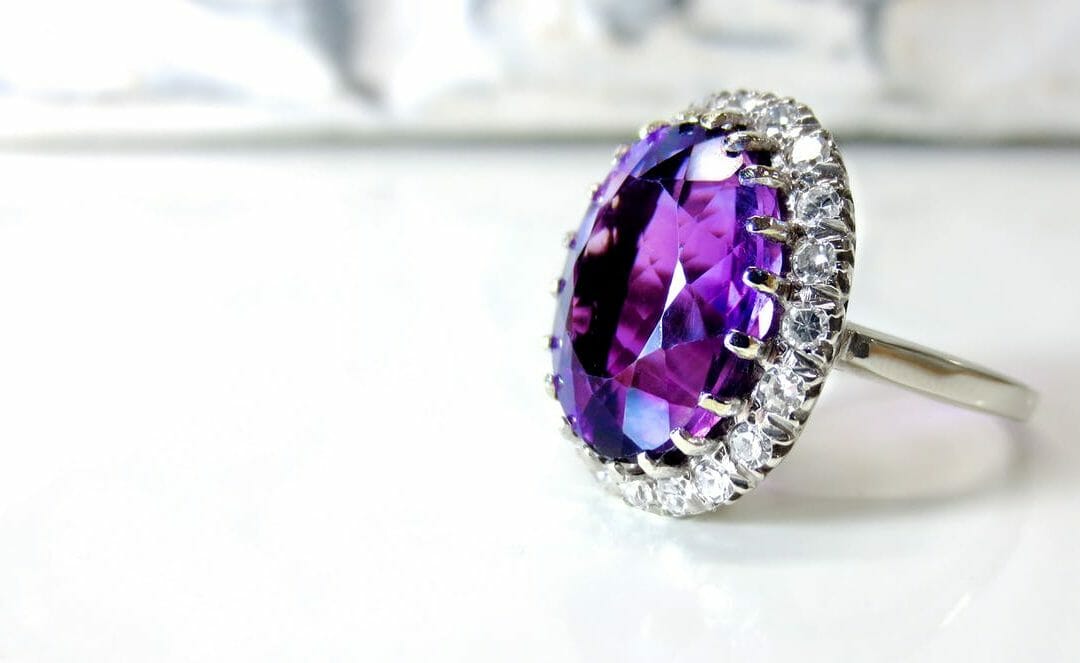A. NATURAL GEMSTONES
The term “Natural” refers to a Gemstone that is found growing/produced in the natural world without the influence of human activity. These would be gemstones mined from the earth, as well as those discovered naturally occurring in the water, such as pearls and coral. Natural Gems have the allure of rarity when compared to their synthetic counterparts. For example, a natural pearl harvested from the ocean can be much more expensive than its synthetic counterpart. A natural star sapphire, likewise, will be at a premium because of its rarity next to a lab created star sapphire. While a gemstone is natural, it could have still undergone treatments and enhancements to change its appearance. An example would be a natural Tanzanite or Sapphire that was heated (a treatment) to deepen its colour intensity or natural diamond that has been laser drilled to bleach out an inclusion (an enhancement). While some treatments and enhancements are common and expected, others are not.
B. SYNTHETIC GEMSTONES (Lab Created or Grown Gemstones):
“Synthetic” Gemstones are physically identical to their Natural counterparts that are mined from the Earth. They have the same physical properties and chemical composition as naturally occurring gemstones. The sole difference is that these are gemstones that are grown and manufactured in laboratories under controlled environments. In these controlled environments, all of the chemicals and minerals that are present in the natural environment are introduced into an environment at the right temperature and pressure levels, allowing synthetic gemstones to “grow”. Because of their growth within a controlled environment, as opposed to the sometimes chaotic and random natural world, Synthetic gemstones will usually have fewer inclusions and more vivid colour than their Natural counterparts, mainly because “impurities” have not been allowed to impact the stone. Being man-made, these stones will typically command a lower price than their naturally occurring counterparts.
” C. GENUINE GEMSTONES
“Genuine” Gemstones can mean NATURAL OR SYNTHETIC Gemstones. With all those beautiful gemstones up for sale on the internet, it is very tempting to go for that low starting bid with no reserve; however, BEFORE you bid, if the gemstone is described as “Genuine”, remember to ask if it is “Natural” or “Synthetic”. Although lab created and natural are the same on a molecular level, knowing the difference will/can determine the “true” value of the gemstone in question. Lab created is nice and affordable because it can be created in a controlled environment … nice quality yet easy to acquire. Natural is harder to come by – the mines which produce the gemstones can be quite unpredictable … the quality can be unpredictable .. so rarity is increased with many precious and semi-precious gemstones.
IN SUMMARY, Natural Gemstones are beautiful, in part, for their rarity and the fact that the right chemicals, minerals and conditions were present in the ground at the right time to form a unique gemstone. This rarity is highly sought after and can make a stone much more valuable. Synthetics are also impressive, as they are often created with noticeably fewer inclusions and have vivid colour. Synthetics can often be had for a fraction of the cost of a naturally occurring gemstone.
The significant differences in the price of “Genuine Natural” gemstones and “Genuine Synthetic” gemstones can easily turn what looks like a good deal into a costly overpriced purchase. Knowing these differences will make you a more informed and discerning gemstone and jewellery buyer! To learn more about precious and semi-precious gemstones, feel free to discuss these topics with your Professional Jeweller when making your next jewellery purchase.




Recent Comments